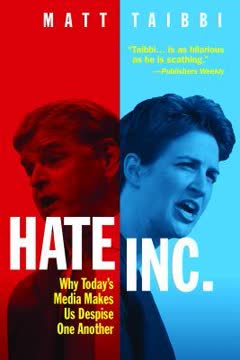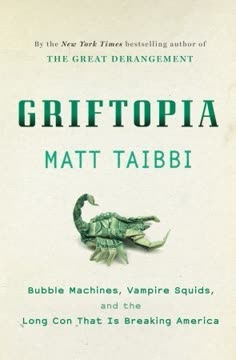Key Takeaways
1. Hate Sells: Media's Shift from Unity to Division
As Trump rode to the White House, we rode to massive profits. The only losers were the American people, who were now more steeped in hate than ever.
From Unity to Division. The modern news media has transitioned from seeking broad audiences and promoting a semblance of unity to actively cultivating division for profit. This shift involves creating distinct audiences of party zealots who consume increasingly intense narratives about one another, fostering a state of devotional anger. This approach, while commercially successful, undermines the potential for informed citizenship and societal progress.
Symbiotic Relationship with Outrage. The media's adversarial stance, particularly towards figures like Donald Trump, has paradoxically fueled its financial success. By "calling out" divisive figures, news outlets attract and retain audiences eager for validation and reinforcement of their pre-existing beliefs. This creates a self-perpetuating cycle of outrage and profit, where the pursuit of truth and understanding takes a backseat to sensationalism and partisan pandering.
Erosion of Trust. Despite record profits, the news media faces historically low levels of public trust. This disconnect stems from the perception that news outlets prioritize profit and political agendas over objective reporting. The focus on sensationalism, partisan narratives, and the amplification of conflict erodes the media's credibility and further polarizes society.
2. The Ten Rules of Hate: Engineering Outrage
So long as the public is busy hating each other and not aiming its ire at the more complex financial and political processes going on off-camera, there’s very little danger of anything like a popular uprising.
Binary Thinking. The media simplifies complex issues into two opposing viewpoints, typically Republican and Democrat, stifling nuanced discussion and critical thinking. This binary framework reinforces partisan identities and discourages exploration of alternative perspectives.
Perpetual Conflict. The news media presents politics as a constant battle between opposing sides, emphasizing disagreement and animosity over common ground and compromise. This creates a climate of perpetual conflict, where viewers are encouraged to see those with differing opinions as enemies.
Personalization of Problems. The media focuses on individual personalities rather than systemic issues, diverting attention from the root causes of social problems. This approach allows for easy scapegoating and prevents meaningful engagement with complex challenges.
3. The Church of Averageness: Why Mediocrity Dominates Media
The people in this business who are clever or original in any way—even in negative ways—almost always meet their comeuppances. They find themselves replaced by duller, meaner, more muddle-headed versions of themselves.
The Rise of the Mediocre. The most influential figures in media tend to be those who espouse conventional wisdom and avoid intellectual risk-taking. This preference for mediocrity stems from a desire to avoid offending audiences and maintain a broad appeal.
Suppression of Originality. Individuals with unique perspectives or challenging ideas are often weeded out of the media landscape, replaced by those who conform to established norms. This creates a homogenized media environment that lacks intellectual diversity and critical inquiry.
The Comfort of the Familiar. Audiences are drawn to media figures who reinforce their existing beliefs and provide a sense of comfort and validation. This demand for predictability incentivizes media outlets to prioritize familiar faces and predictable narratives over originality and insight.
4. Campaign Trail Clowns: The Absurdity of Electability
It turns out we let our electoral process devolve into something so fake and dysfunctional that any half-bright con man with the stones to try it could walk right through the front door and tear it to shreds on the first go.
The Beauty Contest. The presidential campaign process has become a superficial beauty contest, where candidates are judged on their appearance, likability, and ability to conform to arbitrary standards. This emphasis on superficial qualities detracts from substantive policy discussions and informed decision-making.
The "Beer Test." The media's obsession with the "beer test," which prioritizes candidates who are relatable and "likeable," trivializes the qualifications and experience necessary for effective leadership. This focus on superficial charm undermines the seriousness of the electoral process.
Trump's Triumph. Donald Trump's success in the 2016 election exposed the absurdity of the media's "electability" criteria. By flouting conventional norms and embracing outrageous behavior, Trump demonstrated that voters were willing to reject the established order and embrace an anti-candidate.
5. Pollsters and Pundits: The Illusion of Choice
We were training rooters instead of readers. Since our own politicians are typically very disappointing, we particularly root for the other side to lose.
The Poll-Driven Narrative. Pollsters and pundits often shape the narrative of elections by emphasizing certain data points and downplaying others. This can create a self-fulfilling prophecy, where voters are influenced by the perceived electability of a candidate rather than their own preferences.
The "Electability" Myth. The concept of "electability" is often used to discourage voters from supporting candidates who are deemed too radical or outside the mainstream. This can stifle political innovation and limit the range of viable options.
Rooting for Losers. The media's focus on winners and losers transforms elections into a sporting event, where voters are encouraged to root for their team rather than engage in thoughtful deliberation. This approach fosters animosity and division, undermining the potential for constructive dialogue and compromise.
6. The Invisible Primary: Elites Decide, You Ratify
Grass-roots conservatives and liberals may resent it, but many analysts—including me—argue that the outcome of presidential nominations is shaped or even decided by party elites.
The Pre-Ordained Candidate. The "invisible primary" refers to the behind-the-scenes process where party elites, donors, and media figures coalesce around a preferred candidate before the official primary season begins. This pre-selection process can significantly influence the outcome of elections, limiting the choices available to voters.
The Power of Endorsements. Endorsements from influential figures and organizations can provide candidates with a significant advantage in terms of fundraising, media coverage, and voter support. This creates a feedback loop, where early endorsements lead to more endorsements, further solidifying the candidate's position.
The Illusion of Democracy. The "invisible primary" undermines the democratic ideal of elections as a process where voters freely choose their leaders. By shaping the field of candidates and influencing public perception, elites exert a disproportionate amount of control over the outcome.
7. Stolen Moves: How News Media Mimics Pro Wrestling
He was like Tony Clifton snuck into the Miss Universe pageant, doing a farts-only version of “Stairway to Heaven” as the musical portion. He pissed on “nuance” and spent his campaign flouting our phony “presidential” standard.
The WWE-ization of News. The modern news media has adopted many of the techniques of professional wrestling, including the creation of heroes and villains, the exaggeration of conflict, and the use of theatricality to engage audiences. This shift has transformed news into a form of entertainment, where spectacle and emotion often overshadow substance and accuracy.
Heels and Faces. Like pro wrestlers, politicians are often cast as either "heels" (villains) or "faces" (heroes), with the media playing a key role in shaping these personas. This simplistic framing encourages audiences to view politics as a morality play, where good triumphs over evil.
Breaking Kayfabe. The term "kayfabe," which refers to the pro wrestling tradition of maintaining the illusion of reality, has become increasingly relevant to the news media. Reporters who "break kayfabe" by questioning the dominant narrative or challenging established norms risk being ostracized or punished.
8. Addiction by Design: News as the New Nicotine
The news, basically, is bait to lure you into a pen where you can be sold sneakers or bath soaps or prostatitis cures or whatever else studies say people of your age, gender, race, class, and political persuasion tend to buy.
The Dopamine Loop. The news media, like social media platforms, exploits the brain's reward system by providing a constant stream of information that triggers dopamine release. This creates a cycle of addiction, where users crave the next hit of news, regardless of its actual value or impact.
Emotional Manipulation. News outlets intentionally manipulate emotions, particularly fear and outrage, to keep audiences engaged. By presenting a constant stream of threats and injustices, the media creates a sense of anxiety and dependence, making it difficult for viewers to disengage.
The Illusion of Action. The news media fosters the illusion that being informed is a form of action, encouraging viewers to consume more and more content without actually addressing the underlying problems. This can lead to a sense of paralysis and disempowerment, as individuals feel overwhelmed by the scale of the challenges they face.
9. Scare Tactics: Folk Devils and Moral Panics
We manufactured fake dissent, to prevent real dissent.
The Creation of "Folk Devils." The media often identifies and demonizes certain groups or individuals as "folk devils," scapegoats for societal problems. This process involves exaggerating the threat posed by these groups and portraying them as a danger to traditional values and social order.
The Deviancy Amplification Spiral. Moral panics can create a "deviancy amplification spiral," where increased attention and condemnation lead to further marginalization and deviance. This self-fulfilling prophecy reinforces negative stereotypes and perpetuates cycles of fear and prejudice.
The Benefits of Panic. Moral panics can benefit both media outlets and state authorities. Media companies profit from increased viewership and readership, while state agencies gain greater power and resources to address the perceived threat.
10. The Factual Loophole: Unnamed Sources and Unchecked Power
There are many ways of mistrusting something, but people who came away from Manufacturing Consent with the idea that the media peddles lies misread the book.
The "Four-Source Clover." A common journalistic practice involves relying on multiple unnamed sources to bolster questionable scoops, particularly in national security or law enforcement. This creates a "four-source clover," where the same information is cycled through multiple friendly heads, giving the illusion of independent confirmation.
The Erosion of Trust. The reliance on unnamed sources and the lack of independent verification erode public trust in the media. When news outlets are unable to provide concrete evidence to support their claims, they risk being seen as biased or unreliable.
The Power of Official Narratives. Government officials can manipulate the media by selectively leaking information and shaping the narrative to their advantage. This can lead to the dissemination of propaganda and the suppression of dissenting voices.
11. The Class Taboo: Media's Blind Spot
The same news that for decades hadn’t shown poverty on TV unless it was shirtless and being subdued by cops had discovered the ultimate cash cow in Trump, a billionaire who turned the presidential election into a pro wrestling–style ratings magnet.
The Homogenization of Voices. The media landscape has become increasingly dominated by individuals from privileged backgrounds, leading to a lack of diversity in perspectives and experiences. This homogeneity can result in a blind spot towards the concerns and struggles of working-class Americans.
The "Ivy League Monoculture." The rise of an "Ivy League monoculture" in the media has created a disconnect between reporters and the communities they cover. This can lead to a condescending or dismissive attitude towards those who hold different values or beliefs.
The Neglect of Economic Issues. The media often prioritizes cultural issues over economic concerns, neglecting the real-world challenges faced by working-class families. This can further alienate these voters and contribute to a sense of disenfranchisement.
12. Turn It Off: Reclaiming Your Mind from the Machine
Hatred is the partner of ignorance, and we in the media have become experts in selling both.
The Addictive Nature of News. The news media is designed to be addictive, exploiting psychological vulnerabilities to keep audiences engaged. This constant stream of information can lead to anxiety, distrust, and a distorted perception of reality.
The Illusion of Control. The news media creates the illusion that being informed is a form of control, encouraging viewers to consume more and more content without actually addressing the underlying problems. This can lead to a sense of paralysis and disempowerment.
Reclaiming Your Mind. The most effective way to combat the negative effects of the news media is to disengage and reclaim your mental autonomy. By limiting exposure to sensationalism and partisan narratives, individuals can cultivate a more balanced and nuanced understanding of the world.
Last updated:
FAQ
1. What is Hate Inc.: Why Today's Media Makes Us Despise One Another by Matt Taibbi about?
- Media-driven division: The book examines how modern media, motivated by commercial and political interests, manufactures division and hatred among the public, replacing independent journalism with outrage-driven, partisan programming.
- Historical and personal analysis: Taibbi blends his decades of reporting experience with a historical perspective, referencing works like Manufacturing Consent and analyzing the evolution of media manipulation.
- Central argument: Taibbi contends that the media’s main product is division, keeping audiences in isolated silos and undermining democracy by distracting from systemic issues and encouraging mutual animosity.
2. Why should I read Hate Inc. by Matt Taibbi?
- Insider’s confessional: Taibbi offers a rare, candid look inside the media industry, exposing the commercial and political pressures that shape news coverage and fuel polarization.
- Media literacy boost: The book equips readers to recognize manipulative media tactics, making it essential for anyone seeking to critically engage with news in the digital age.
- Empowering advice: Taibbi provides practical insights and strategies for protecting oneself from media manipulation and resisting divisive narratives.
3. What are the key takeaways from Hate Inc. by Matt Taibbi?
- Moral panic and division: Media creates exaggerated threats and “folk devils,” fueling cycles of fear and authoritarian responses for profit and power.
- Addictive outrage: News is designed to be emotionally manipulative and addictive, keeping audiences anxious, angry, and dependent on constant updates.
- Systemic issues ignored: The media focuses on personalities and partisan conflict, often neglecting deeper, bipartisan, or institutional problems.
- Homogeneity in journalism: The profession’s class and cultural exclusivity narrows perspectives and disconnects media from large segments of the population.
4. What is the "moral panic" concept in Hate Inc. and how does Matt Taibbi explain it?
- Definition and origins: Moral panic is when media exaggerates or fabricates threats posed by certain groups, creating “folk devils” and widespread fear, a concept rooted in Stanley Cohen’s work.
- Media’s role: Sensationalist reporting uses symbolic language and selective facts to dehumanize groups, justifying harsh laws and policing.
- Self-reinforcing spiral: The process leads to less tolerance, more criminalization, and further alienation, escalating social conflict and benefiting both media profits and state power.
- Modern examples: Taibbi connects this pattern to issues like the War on Drugs, immigration scares, and Russiagate.
5. How does Matt Taibbi describe the transformation of news into entertainment and sports in Hate Inc.?
- News as spectacle: Political coverage is treated like sports, encouraging audiences to pick sides, cheer victories, and despise opponents, fostering tribalism.
- Emotional manipulation: Audiences are trained to be emotionally invested in their “team,” with media personalities acting as cheerleaders or antagonists.
- Scripted debates: Shows often pre-screen guests to ensure predictable conflict, limiting genuine debate and keeping viewers engaged.
- Taboo of indifference: Admitting ignorance or indifference is discouraged, reinforcing a zero-sum, emotionally charged view of politics.
6. What are the "Ten Rules of Hate" in Hate Inc. and why are they important?
- Framework for division: The “Ten Rules of Hate” outline how media simplifies news into binary oppositions and personal attacks to manufacture conflict.
- Key rules: These include only allowing two ideas (left vs. right), permanent conflict, hating people not institutions, blaming others, and avoiding shared responsibility.
- Impact on discourse: These rules create narrow, antagonistic conversations, preventing understanding of systemic issues and fostering tribalism.
- Reader empowerment: Recognizing these patterns helps readers see beyond manufactured outrage and resist manipulation.
7. How does Hate Inc. by Matt Taibbi explain the media’s role in the 2016 U.S. presidential election?
- Sensationalist coverage: The media turned the election into a spectacle, prioritizing ratings over substantive coverage and giving Donald Trump massive free publicity.
- Failure of introspection: After Trump’s victory, the media avoided self-criticism and doubled down on adversarial, polarizing coverage.
- Sports-like framing: The election was covered like pro wrestling, with media outlets adopting partisan roles and focusing on conflict rather than policy.
- Trump as a “heel”: Trump exploited the media’s appetite for spectacle, playing the villain role to drive engagement.
8. What is the "Invisible Primary" described in Hate Inc. and how does it influence elections?
- Pre-primary power: The “Invisible Primary” is the period before voting when party elites, donors, and media insiders effectively decide the likely nominee.
- Party control: Despite reforms, party bosses still wield significant influence by coordinating support, shaping narratives, and marginalizing outsiders.
- Democratic impact: This process undermines the ideal of open elections, making campaigns more about pleasing insiders than representing voters.
- Trump’s disruption: The 2016 election disrupted but did not eliminate this process, highlighting its ongoing influence.
9. How does Matt Taibbi critique journalistic practices and failures in Hate Inc.?
- Reliance on unnamed sources: National security stories often depend on multiple unnamed officials, leading to unverified information being recycled and amplified.
- Lack of fact-checking: Stories based on secret information are difficult to verify, resulting in misinformation and public deception.
- Cozy relationships: Journalists’ social and educational similarities with officials foster uncritical acceptance of official narratives.
- Major errors: Taibbi cites the Iraq War WMD claims and Russiagate as examples of media failures with lasting consequences.
10. What does Hate Inc. say about class and cultural homogeneity in journalism and its effects?
- Social exclusivity: Journalism is dominated by college-educated, upper-middle-class individuals, with few from working-class backgrounds.
- Narrow perspectives: This homogeneity leads to media that is less attentive to working-class issues and more aligned with elite interests.
- Political consequences: The disconnect helped create openings for populist figures like Trump, whose appeals resonated with ignored voters.
- Loss of blue-collar voices: The decline of working-class columnists has reduced empathetic, nuanced political analysis.
11. How does Hate Inc. by Matt Taibbi explain the addictive nature of news consumption?
- News as a product: News is designed to be addictive and emotionally manipulative, keeping audiences anxious, angry, and dependent on constant updates.
- Dopamine-driven loops: Media outlets use feedback loops that trigger strong emotional responses, especially fear and outrage, to maximize engagement and profits.
- Negative consequences: Regular news consumption can increase loneliness, anxiety, mistrust, and depression, while providing little real empowerment.
- Continuous crisis: Modern media discourages disengagement, keeping audiences in a constant state of fear and outrage.
12. What are the best quotes from Hate Inc. by Matt Taibbi and what do they mean?
- “Anger just for you”: This phrase encapsulates how media tailors content to provoke outrage in specific audiences, reinforcing silos and division.
- “News is like cigarettes”: Taibbi likens news consumption to smoking, emphasizing its addictive and harmful nature.
- “Only two ideas allowed”: This rule highlights the media’s tendency to reduce complex issues to binary oppositions, stifling nuanced debate.
- “Hate people, not institutions”: The media’s focus on personalizing problems distracts from systemic issues, maintaining the status quo.
- “The cult of continuous crisis”: This concept describes how media keeps audiences in a perpetual state of alarm, benefiting profits but harming public discourse.
Review Summary
Hate Inc. receives mostly positive reviews for its scathing critique of modern media. Readers appreciate Taibbi's insider perspective and analysis of how news outlets polarize audiences for profit. Many find the book thought-provoking and relevant, praising its examination of media manipulation and political polarization. Some criticize Taibbi's writing style as overly aggressive or vulgar. The book's focus on American media sometimes limits its accessibility for international readers. Overall, reviewers consider it an important and timely work that exposes the media's role in fostering societal division.
Similar Books
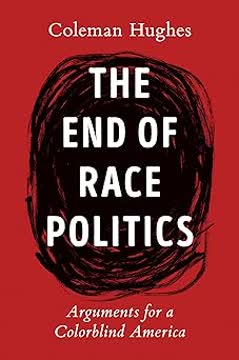
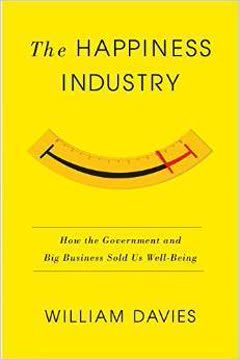

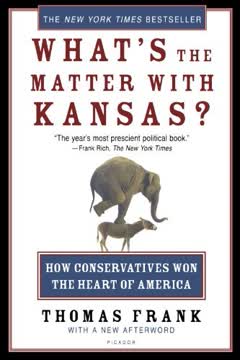
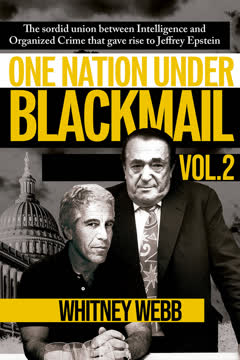
Download PDF
Download EPUB
.epub digital book format is ideal for reading ebooks on phones, tablets, and e-readers.
